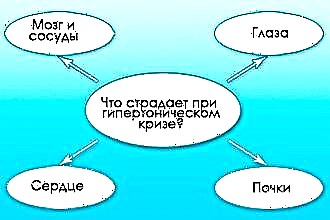Laser removal of tonsils is a painless procedure for excision of lymphadenoid formations (palatine tonsils). During surgical procedures, the tissue to be operated on is excised using a laser beam, not a metal scalpel. Monochromatic narrowly directed flux of radiation not only dissects soft tissues, but also "seals" small vessels, which prevents blood loss.
 The absence of open wound surfaces is one of the key advantages of laser ectomy.
The absence of open wound surfaces is one of the key advantages of laser ectomy.
Due to the absence of delayed bleeding, it reduces the risk of developing septic inflammation, which accelerates the epithelialization of the operated tissues.
If the rules of the rehabilitation program are observed, complete restoration of the integrity of the oropharyngeal mucosa is observed after 10-15 days.
Specificity of laser tonsillectomy
Laser tonsillectomy is one of the most non-traumatic methods of removing lymphadenoid formations. During the operation, the specialist uses a laser instrument, with the help of which not only the excess tissue is excised, but also thromboses the damaged vessels in parallel. This prevents severe blood loss and aspiration of blood into the airways.
In otolaryngology, there are two main methods of performing surgical procedures:
- laser ectomy - complete removal of the palatine tonsils with peri-rectal tissue;
- laser ablation - partial excision of tissue overgrown or affected by disease-causing agents.
Important! Surgical intervention is carried out only if there are serious prerequisites for the development of complications: chronic tonsillitis, retropharyngeal abscess, etc.
It should be understood that partial excision of the tonsils prevents a sharp decrease in local immunity. If it is possible to preserve at least part of the lymphadenoid formations, the surgeon proposes to undergo ablation for the patient, although in the future this does not guarantee the absence of hypertrophy (tissue proliferation).
Types of laser tonsillectomy
To date, laser removal of tonsils and tonsils (tonsillectomy) can be carried out in at least 4 ways.
The choice of technique is determined by the degree of soft tissue damage and the goals that are pursued by the operation:
- infrared laser - capable of not only cutting, but also soldering tissue;
- fiber-optic laser - painlessly and with minimal blood loss excises the tonsils together with the peri-almond tissues;
- holmium laser - cuts out only the areas of the tonsils affected by inflammation, leaving the nearby lymphoid tissues intact;
- carbon laser - promotes "evaporation" of the tonsils, as a result of which their volume decreases.
Fiber and infrared lasers are more commonly used to remove tonsils, while holmium and carbon lasers are used to ablate them.
The laser is a “sterile” instrument that prevents septic tissue inflammation after surgery. Only improper preoperative preparation and non-compliance with the recommendations approved by the rehabilitation program can provoke infection of the operated areas of the mucosa.
Indications and contraindications
Strictly speaking, there are not many indications for surgical treatment. It is advisable to remove the tonsils only in situations where there is a threat of severe systemic complications: rheumatism, meningitis, pyelonephritis, myocarditis, encephalitis, etc. Tonsillectomy will be justified if:
- paratonsillar abscess;
- frequent relapses of chronic tonsillitis;
- ineffectiveness of drug treatment for ENT diseases;
- hyperplasia of lymphadenoid tissues;
- defeat of the glands by beta-hemolytic streptococcus;
 complications from the kidneys and heart.
complications from the kidneys and heart.
Untimely excision of infected organs can lead to the development of bacterial endocarditis, reactive arthritis and chorea minor.
Surgical intervention, in particular general and local anesthesia, creates a great burden on the internal organs. Therefore, before performing tonsillectomy, contraindications should be considered:
- hemophilia;
- pregnancy;
- diabetes;
- age up to 5 years;
- oncology;
- vascular disease;
- exacerbation of chronic diseases.
Individual indications and contraindications for the operation can only be determined by the attending physician after passing the appropriate tests.
Advantages and Disadvantages of Ectomy
Laser ectomy has a number of important advantages over the classical method of performing the procedure, which involves the excision of soft tissue with a scalpel and a metal loop. However, when choosing the optimal surgical method of treatment, it is necessary to take into account not only the advantages, but also its disadvantages:
| Dignity | Flaws |
| absence of bleeding and post-hemorrhagic anemia | the formation of burns near the operated tissues |
| the possibility of performing an operation under local anesthesia | high probability of re-proliferation of lymphadenoid tissues |
| short time for ectomy (no more than 30 minutes) | removal of the affected organs occurs only after at least 5-7 procedures |
| the possibility of performing tonsillectomy on an outpatient basis | |
| lack of open wound surfaces in the operated areas of the throat mucosa |
As a rule, the removal of tonsils with a laser is carried out in the absence of diffuse inflammation in the mucous membrane of the oropharynx. During the procedure, the tissues become very hot, which can cause burns. To reduce the likelihood of postoperative complications, with the development of a paratonsillar abscess, the operation is performed using a conventional scalpel and a metal loop.
Preparation and course of the operation
Preliminary preparation for the procedure includes refusal to consume food and drink 3-4 hours before the ectomy. During the consultation, the specialist tells the patient about the future course of the operation and the importance of adhering to the rules established by the rehabilitation program. Compliance with all recommendations guarantees the absence of serious postoperative complications.
One of the most important advantages of laser therapy is the short duration of the operation and the absence of the need for general anesthesia. Local anesthesia with "Lidocaine" allows you to minimize the sensitivity of tissues and, accordingly, the pain of the entire procedure. Tonsillectomy takes no more than 20-30 minutes in total, after which the patient can go home.
 How is the removal of tonsils with a laser?
How is the removal of tonsils with a laser?
- the patient is seated in an otolaryngological chair and given special glasses to protect the eyes from laser radiation;
- the mucous membrane of the throat and tonsils is treated with a local anesthetic;
- after complete numbness of the tissues, the laser electrode is brought to the lymphoid formations;
- with the help of forceps, the specialist grasps the tonsil, after which he excises the affected tissue with a laser beam.
Direct removal of the tonsils is carried out only after a deep breath while the patient is holding his breath.
The success of the operation largely depends on the skill of the surgeon and the accuracy of the movements performed by him. In the absence of extensive wound surfaces and burns, the oropharyngeal mucosa regenerates within 1-2 weeks. To speed up the regression of catarrhal processes, it is advisable to gargle with a non-concentrated saline solution in the first few days after ectomy.
The effectiveness of tonsillectomy
The efficiency of ectomy with the use of a laser "knife" approaches 80%, while ablation often leads to relapses of lymphadenoid tissue hyperplasia. In comparison with the classical method of removing the tonsils, laser therapy is less traumatic. During surgery, the nerve endings are partially exposed, which helps to reduce pain.
Unlike a metal scalpel, the laser beam promotes vascular coagulation. This prevents not only blood loss, but also septic inflammation of the operated tissues. The "interactive" contact of the surgeon with the patient through a laser reduces the risk of transmission of pathogenic particles (hepatitis, HIV). During rehabilitation, it is enough for the patient to drink antibiotics and immunostimulants on drink in order to prevent the development of infectious diseases.

 complications from the kidneys and heart.
complications from the kidneys and heart.

